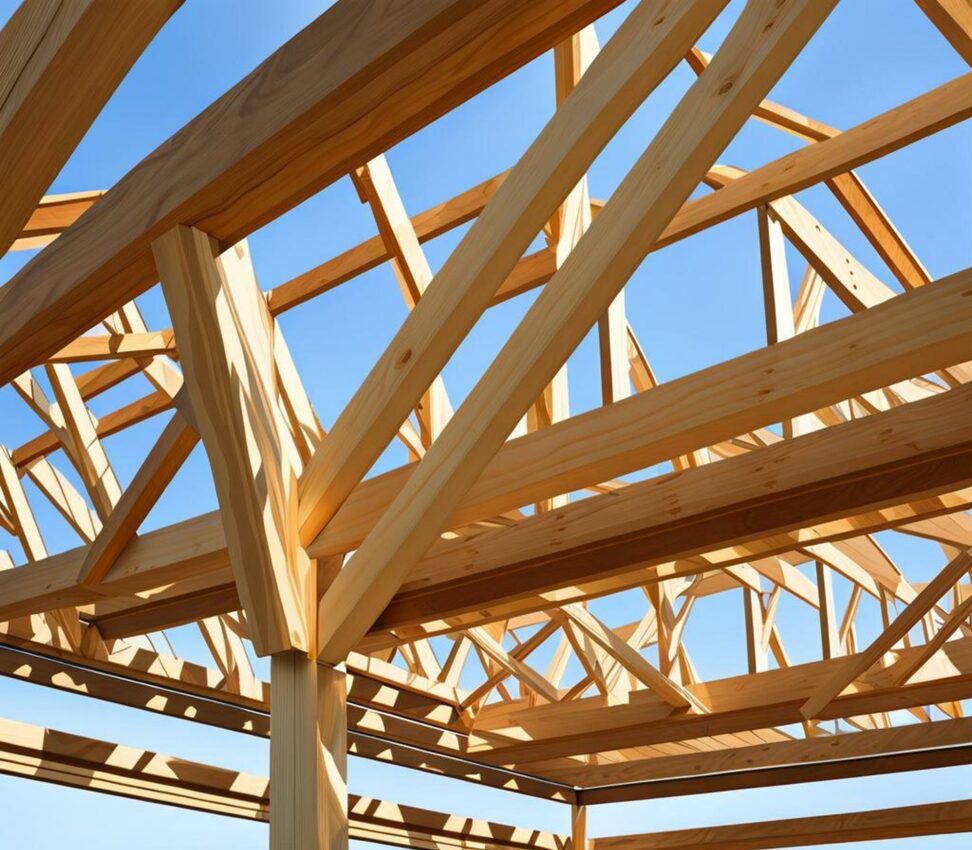Truss or Rafter Roofs - Which is Best? A Breakdown of Differences
When it comes to building a new home or renovating an existing one, choosing the right roof system is a critical decision. Two of the most common options for pitched roof frameworks are truss roofs and rafter roofs. But which structural support system is the better choice for your project?
We'll compare the pros and cons of each when it comes to cost, construction method, customization, and impact on living spaces. We'll also overview how trusses and rafters are built so you can better understand how each system works.
What are Truss Roofs?
Truss roofs are prefabricated structural frameworks made up of triangular wooden frames. The frames are efficiently constructed in a factory using a combination of wooden chords, webs, and metal connector plates.
The triangular truss units interlock and support each other to form a rigid framework that distributes weight and withstands forces from winds, snow, and other loads. Here are some of the main advantages and disadvantages of truss roof systems:

- Advantages
- Cost effective due to factory prefabrication
- Faster installation time
- Consistent quality with engineered design
- Disadvantages
- Less customizable options
- Can limit living space under the roof
Truss Roof Construction
The engineered design of trusses allows them to be prefabricated offsite under controlled factory conditions. The trusses are designed and cut using computer-optimized plans to maximize strength while minimizing materials.
Once constructed in the factory, the trusses are transported to the building site pre-assembled. They are then efficiently craned into place and secured to anchor plates on the wall top plates. This makes installation much faster compared to building a roof structure from scratch on-site.
Cost of Truss Roofs
There are several factors that make truss roofs generally more affordable compared to rafter roofs:
- Factory efficiency results in lower labor costs, as trusses are assembled by machine versus by hand.
- Materials costs can also be lower because factory plans minimize waste.
- Minimal assembly is required on-site, reducing on-site labor costs.
- Transporting pre-built units is cheaper than transporting raw lumber.
Overall, the streamlined process of truss fabrication and installation makes truss roofs around 20-30% cheaper than comparable rafter roofs.
What are Rafter Roofs?
Unlike trusses, rafter roofs utilize traditional wooden rafters as the primary structural element. Rafters are angled beams that extend from the roof ridge to the bottom wall plates at the eaves.
The rafters are cut and assembled on-site piece-by-piece into a network of beams that support the roof decking and shingles or other roofing materials. Here are some of the main upsides and downsides of rafter roofs:
- Advantages
- More design flexibility for custom looks
- Can maximize usable space under roof
- Disadvantages
- More expensive overall
- Intensive on-site labor for construction
Rafter Roof Construction
Because they are built on-site, constructing a rafter roof takes more time and labor than truss roofs. Each rafter must be hand-cut to length and angles based on the building plans. The rafters are then lifted into place one-by-one and anchored to the wall plates and roof ridge.
Unlike factory-built trusses, there is greater potential for human error when cutting and assembling rafters on-site. The right expertise is essential for properly constructing a rafter roof system.
Cost of Rafter Roofs
The main reasons rafter roofs have higher costs than truss roofs include:
- Higher labor costs for extensive on-site construction
- Greater material costs because of unused scraps from on-site rafter cutting
- Less efficient transportation of bulk lumber versus pre-cut trusses
Overall, rafter roofs can be 20-30% more expensive than comparable truss roofs due to higher labor and materials costs.
Truss vs. Rafter Roof Comparison
Now that we've covered the basics of truss and rafter roof systems, let's directly compare them across a few key factors:
Cost Comparison
Due to the labor and material efficiencies of factory truss construction, truss roofs are generally the more affordable option. Rafter roofs require extensive on-site cutting and assembly of beams, contributing to costs that can be 20-30% higher.
Construction Comparison
The prefabricated nature of trusses allows for faster installation compared to the on-site construction demands of rafters. Trusses can be installed in days versus weeks or months for rafter builds.
Customization Comparison
Rafter roofs allow for nearly endless customization possibilities since beams are hand-cut on-site per design. The standardized truss sizing and shapes limit flexibility in roof design.
Living Space Comparison
Rafters maximize usable living area under the roof by allowing for more open space between beams. The complex web of angled trusses can restrict space and headroom availability under the roof.
Questions to Consider for Your Project
When deciding between truss and rafter roofs, here are some important factors to weigh for your specific home building or re-roofing project:
- What is your overall budget? Truss roofs provide significant cost savings.
- How important is customizability? Rafters enable greater flexibility.
- Will you use attic space for living areas? If so, rafters maximize open space.
- What is the pitch and size of the roof? Trusses work well for steep or large roofs.
- How quickly do you need the roof installed? Trusses enable faster construction.
Carefully considering your priorities across factors like these will help determine whether a truss or rafter roof is the ideal system for your unique project.
Truss and rafter roofs achieve the same end goal of providing structural support for the roof. But the differences in how they are constructed, installed, and integrated impact variables like cost, living space, timeline, and customization.
In summary, the key differences come down to:
- Truss roofs are more affordable but limit customization
- Rafter roofs allow for design flexibility but are pricier
- Trusses enable fast installation while rafters maximize usable space
For any new home build or re-roofing project, carefully examine your needs and priorities. This will empower you to make the optimal choice between truss and rafter roof frameworks.